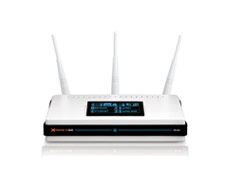
What is the best and most rational compression method, ripping Your CD-s? To understand it better, I ripped one jazz album, containing 9 tracks of hi quality jazz tunes. I ripped it in 5 diccerent modes, using only good quality setting and skipping crappy ones. My Windows Media Player 11 compressions were:
WMA Loseless (about 250 MB) Not supported by most DMR's!
WMA Variable (about 90 MB) Ennuste recommends!
MP3 320 (about 90 MB) Ennuste recommends!
WMA Pro (about 55 MB) Not supported by most DMR's!
WMA 192 (about 55 MB)
MP3 192 (about 55 MB)
Loseless WMA produces about 5 times bigger file than 192 kbit/s compression. Widespread media receivers don't play Loseless. Usually they are limited to MP3 320 kbit per second rate.
My 0.02 cents
Use WMA Variable or MP3 320 kbit/s compression. You may not forgive yourself in the future, that compressed the music too economically. Lets bare in mind that original CD has 1411 mbit/s bitrate. You lose 66% disk space, using higher bitrate, but result transparent.
There is big quality difference between encoders, not all are created equal in this world. Crappy encoders show high bitrates, but result is not transparent. Use only well-known quality tools!
EconomicsOne CD album occupies about 90 MByte of hard disk, using hi quality 320 kbit/s encoding. What is the cost of this space?
WD Caviar SE16 250GB Hard Drive (Serial ATA II, 7,200RPM, 16MB - MPN: WD2500KS)
Price Range: $71.99 - $131.00, typically around $80.00. One HD can hold 2500 CD albums, so:
Cost of ONE CD on the hard disk = 0,03 cents
 Today I completed my Gustav Mahler 11 Symphonies ripping job, requiring almost 70 GB free space from my ripping workstation. Not mentioning of two 3GHz CPU-s, running hot at 99% performance level.
Today I completed my Gustav Mahler 11 Symphonies ripping job, requiring almost 70 GB free space from my ripping workstation. Not mentioning of two 3GHz CPU-s, running hot at 99% performance level.





















